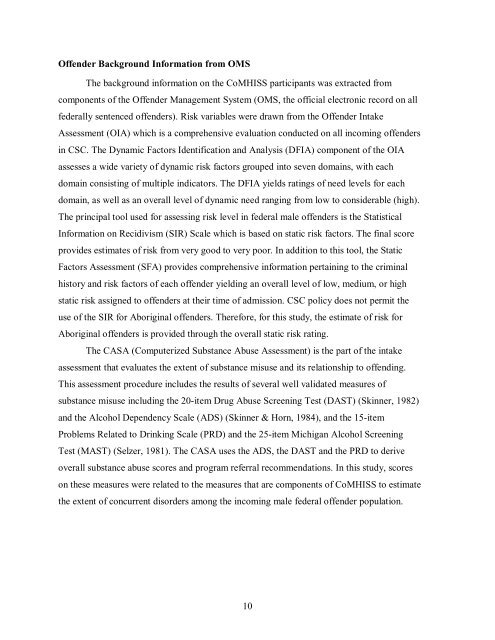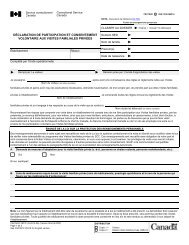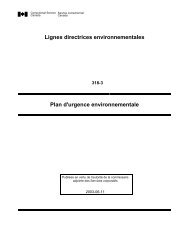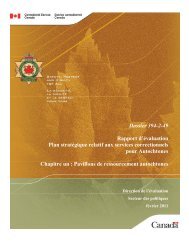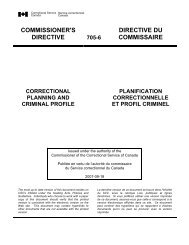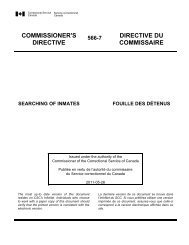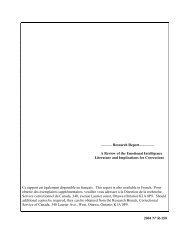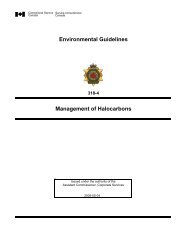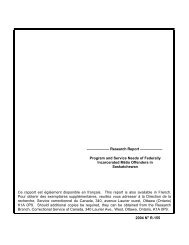The Brief Symptom Inventory (BSI) - Service correctionnel du Canada
The Brief Symptom Inventory (BSI) - Service correctionnel du Canada
The Brief Symptom Inventory (BSI) - Service correctionnel du Canada
You also want an ePaper? Increase the reach of your titles
YUMPU automatically turns print PDFs into web optimized ePapers that Google loves.
Offender Background Information from OMS<br />
<strong>The</strong> background information on the CoMHISS participants was extracted from<br />
components of the Offender Management System (OMS, the official electronic record on all<br />
federally sentenced offenders). Risk variables were drawn from the Offender Intake<br />
Assessment (OIA) which is a comprehensive evaluation con<strong>du</strong>cted on all incoming offenders<br />
in CSC. <strong>The</strong> Dynamic Factors Identification and Analysis (DFIA) component of the OIA<br />
assesses a wide variety of dynamic risk factors grouped into seven domains, with each<br />
domain consisting of multiple indicators. <strong>The</strong> DFIA yields ratings of need levels for each<br />
domain, as well as an overall level of dynamic need ranging from low to considerable (high).<br />
<strong>The</strong> principal tool used for assessing risk level in federal male offenders is the Statistical<br />
Information on Recidivism (SIR) Scale which is based on static risk factors. <strong>The</strong> final score<br />
provides estimates of risk from very good to very poor. In addition to this tool, the Static<br />
Factors Assessment (SFA) provides comprehensive information pertaining to the criminal<br />
history and risk factors of each offender yielding an overall level of low, medium, or high<br />
static risk assigned to offenders at their time of admission. CSC policy does not permit the<br />
use of the SIR for Aboriginal offenders. <strong>The</strong>refore, for this study, the estimate of risk for<br />
Aboriginal offenders is provided through the overall static risk rating.<br />
<strong>The</strong> CASA (Computerized Substance Abuse Assessment) is the part of the intake<br />
assessment that evaluates the extent of substance misuse and its relationship to offending.<br />
This assessment proce<strong>du</strong>re includes the results of several well validated measures of<br />
substance misuse including the 20-item Drug Abuse Screening Test (DAST) (Skinner, 1982)<br />
and the Alcohol Dependency Scale (ADS) (Skinner & Horn, 1984), and the 15-item<br />
Problems Related to Drinking Scale (PRD) and the 25-item Michigan Alcohol Screening<br />
Test (MAST) (Selzer, 1981). <strong>The</strong> CASA uses the ADS, the DAST and the PRD to derive<br />
overall substance abuse scores and program referral recommendations. In this study, scores<br />
on these measures were related to the measures that are components of CoMHISS to estimate<br />
the extent of concurrent disorders among the incoming male federal offender population.<br />
10


